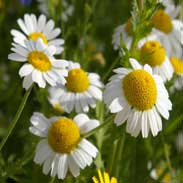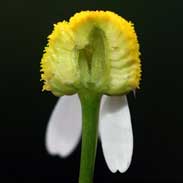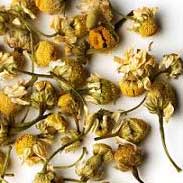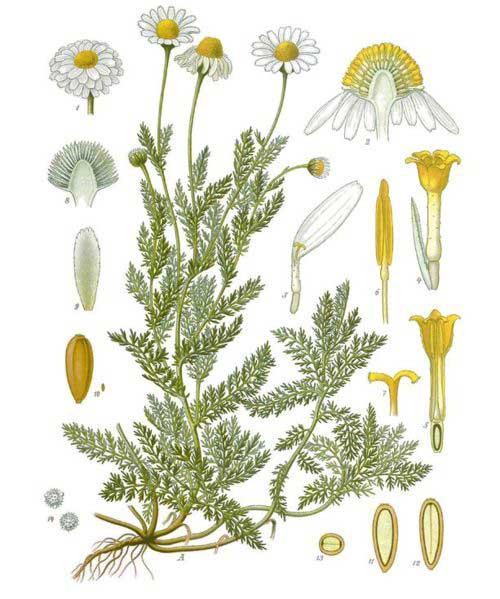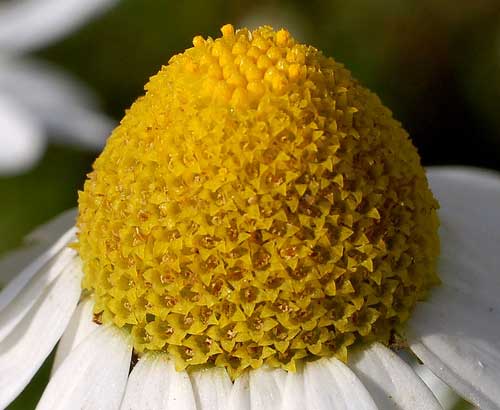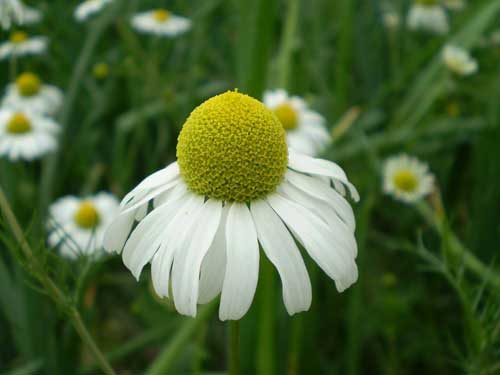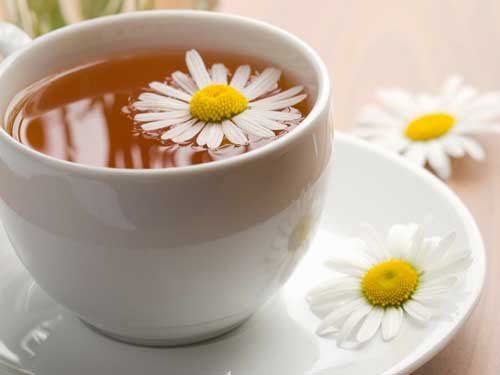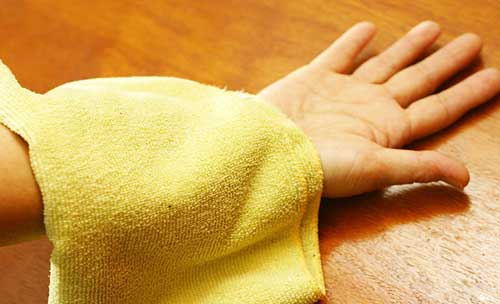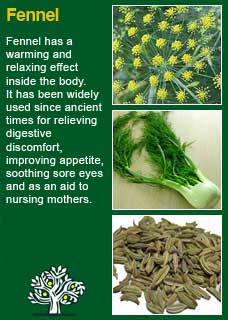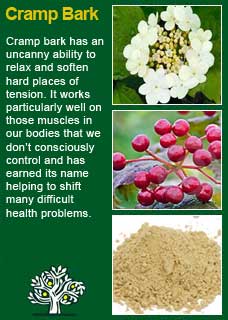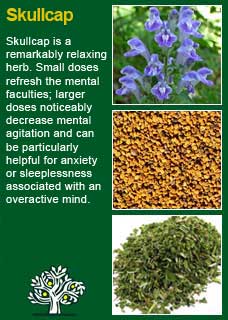
|
|
||||
| Our Pages ABOUT CONSTITUTIONAL MEDICINE
|
In herbal medicine, it is the dried flowers of Chamomile, an annual, wispy plant that grows all over the world. The name Chamomile comes from Greek where it means ‘Earth apple’. Chamomile’s Latin name comes from the word Mater, meaning both mother and womb.
Chamomile is able to relieve intestinal cramping and at the same time induce relaxation. It can be very good for digestive disturbances from infant colic to adult indigestion and everything in between. Avicenna, in his Canon of Medicine, one of the most influential medical books in history, writes of Chamomile being 'deobstruent and rarefying of thick humours, it is relaxant and mild dissolvent'. He describes it uses for inflammation 'it soothes and softens the hot swellings by producing relaxation and dissolution and is administered internally in cases of severe swellings of the viscera'... 'It reduces tension, strengthens the muscles and is the most useful drug for removing fatigue...' Hoffmann adds the actions of nervine, bitter and vulnerary and writes 'Chamomile, probably the most widely used relaxing nervine herb in the Western world, is safe for use in all types of anxiety and stress-related disorders' Hoffmann says that the list of indications for Chamomile may seem too good to be true 'but it simply reflects the wide range of Chamomile's actions in the body' and he goes on to include 'insomnia, anxiety, menopausal depression, loss of appetite, dyspepsia, gastric ulcers, diarrhoea, colic, aches and pains of flu, migraine, neuralgia, teething, vertigo, motion sickness, conjunctivitis, inflamed skin, urticaria and many others!' Priest & Priest recommended Chamomile combined with Catnip 'for restlessness and nervous irritation' and Clymer suggested pairing it with Valerian 'for extreme nervousness where the stomach is at fault' Clymer also recommended combining Chamomile with Motherwort 'for nervous dyspepsia and sick headache during the period' Ellingwood writes 'a few drops in half of a glass of water, given every few minutes in dram doses, will quiet extreme restlessness and irritability. It especially controls certain forms of colic. Peevish children and those who are continuously fretting, or crying out and who demand constant care are benefited' King's Dispensatory writes 'Chamomile is an important remedy with us, particularly in affections of young children. It has two particular specific fields of action—one upon the nervous system, subduing nervous irritability, and the other upon the gastro-intestinal tract, relieving irritation. Various painful conditions are relieved by Chamomile infusion. Among these may be mentioned earache, rheumatism, catarrhal affections of the bowels, ears, nose, and eyes. A Chamomile patient is restless, irritable, discontented, and impatient, and, if a child, is only appeased when continually carried. Inhaling the steam from a strong and hot chamomile infusion is an old treatment for hay fever and skin and eye infections have been treated with chamomile compresses and ‘washes’ by many cultures for many centuries. Strong chamomile teas have been used for both headaches and migraines around the world and Chamomile is considered in European herbal medicine to be one of the most reliable treatments for menstrual cramps.
Chamomile has had a number of interesting studies in recent years, some highlights as follows: ~ One clinical study showed that taking capsules containing German chamomile extract 220-1100 mg daily for 8 weeks significantly reduced anxiety rating scores compared to placebo in adult patients with generalized anxiety disorder (Amsterdam JD, Li Y, Soeller I, et al. A randomized, double-blind, placebo-controlled trial of oral Matricaria recutita (chamomile) extract therapy for generalized anxiety disorder. J Clin Psychopharmacol. 2009;29(4):378-382) ~ A double-blind study on babies approximately 3 weeks of age with severe colic showed that a tea containing chamomile was significantly better than placebo and a number of the treated babies had a complete resolution of the colic (Weizman Z, Alkrinawi S, Goldfarb D et al. J Pediatrics 1993;122(4):650-652). ~ A combination of Chamomile and pectin was shown in a double-blind, placebo-controlled study to be significantly better than placebo in the resolution of acute, uncomplicated diarrhoea (De La Motte S, Bose-O'Reilly S, Heinisch M et al. Arzneim-Forsch 1997;47(11):1247-1249) ~ Chamomile extract in cream form was compared against steroidal and non-steroidal preparations in the treatment of eczema and was found to be as effective as a mild hydrocortisone cream and superior to the nonsteroidal anti-inflammatory agent (5% bufexamac) and a glucocorticoid preparation: 0.75% fluocortin butyl ester (Aertgeerts P, Albring M, Klaschka F et al. Z Hautkr 1985;60(3):270-277). ~ Chamomile creams have shown benefit in treating eczema, varicose eczema and varicose ulcers in several trials. Standardised Chamomile cream showed mild superiority over 0.5% hydrocortisone cream in medium atopic eczema - the study was partially 'blinded' in that the patient treated one half of their body with the steroidal cream and the other half with the Chamomile cream with the two creams being otherwise identical in appearance (Patzelt-Wenczler R, Ponce-Poschl E: Eur J Med res 5(4):171-175, 2000) ~ Laboratory studies with Chamomile show that its essential oil (bisabalols and chamazulene) contain potent anti-inflammatory, anti-microbial and anti-spasmodic actions (Hormann HP, Korting HC. Evidence for the efficacy and safety of topical herbal drugs in dermatology: part I: anti-inflammatory agents. Phytomedicine 1994;1:161-71) (Wang Y, Tang H, Nicholson JK, et al. A metabonomic strategy for the detection of the metabolic effects of chamomile (Matricaria recutita L.) ingestion. J Agric Food Chem 2005;53:191-6) ~ The authors, titles and where-and-when published of nearly 60 further studies and articles on Chamomile are listed in a PDF found here
Chamomile tincture will almost certainly not cause an allergic reaction even in someone who cannot drink the tea as it appears to be the pollen in the plant that are the problem and these do not remain present in the tincture.
For some years now, against this proven and safe way of herbalism, there has been a rising tide of excessive caution and scare-mongering in many parts of the world. The same authorities that, not so long ago, decried herbal medicines as ineffectual, have now taken up a different adversarial position; that they are dangerous substances that should only be prescribed by Doctors, who of course have zero training in them. Unfortunately, the same unnecessary fear and worry has crept into many natural health websites and popular publications on herbs. Herbs that we have safely used for thousands of years, that have no reports of adverse reactions in the medical literature despite widespread use by millions of people, are suddenly described as contraindicated because of something that should have been seen as completely unimportant, or at the utmost a merely theoretical concern, such as a laboratory study on one of the herb's constituents to use an all too common example. I wonder sometimes if the writers of such articles feel that the herb will be more deserving of respect if it is thought to be a little bit dangerous, in other words more like a drug than something that has simply come out of the earth and been used by ordinary people for generations beyond count. There is just so much misinformation about herbal medicine on the internet now. Ludicrous claims and cautions abound in equal measure; it seems like one group are trying to make money out of the public whilst the other are busily trying to scare them off. I have to believe that the kind of reader who takes the time to read pages on herbs that are as extensive as this one is much less likely to be swayed by marketers or misinformers. I hope that you will keep your wits about you if you get conflicting opinions from people who have never really got to know these herbs, who have never worked with them, or learned how to use them safely and effectively. I want to remind you that the reason that herbs can never be patented and owned by any individual or corporation is because they are, and always will be, the People's medicine. They belong to all of us and it is my great hope in sharing this work that you will learn how to use them wisely for yourself, and the people you care for. Be safe, but do not be afraid.
Being such a common herb, Chamomile is usually rather under-estimated but it is marvellous how quickly Chamomile can give relief when used in the right way. For example, if you give a strong cup of chamomile tea to a person suffering the miseries of indigestion, and make sure that they sip it whilst it is hot so that all the essential oils penetrate into the tight muscles of the gut, you will see how it gives immediate and significant relief. Likewise, bathing an inflamed eye with cooled chamomile tea gives instant relief. I've had many opportunities to see in person how marvellous a medicine Chamomile can be when needed; e.g. how as little as a tsp of Chamomile tea has successfully relaxed babies whose colic was previously inconsolable, how a cloth soaked in the cooled tea can gave instant relief to the awful pain of an eye infection, how people in all kinds of stress and tension soften up and relax with its soft touch. Chamomile is the great mother herb, the herb we use for our cherished infants with their fevers, their teething, their distress. Chamomile is not the medicine that you have to take day after day to build an effect, when you get the form and dose of it right, it will be there when you need it. For anyone who was studying herbal medicine or just wanted to learn more about this great plant ally I warmly recommend the practice of taking a good strong cup of Chamomile tea, or a tsp of its tincture and, with a quiet and open mind, feeling for yourself its unique 'action', how it reaches in to wherever you are most sore or vulnerable and makes things feel better. Further to this, if you would like to learn more about the ancient art of pulse testing, a simple but powerful way to ask the intuitive intelligence of the body for its responses to a herb by feeling the pulse whilst giving a tiny dose by mouth, read here I don't think it is helpful to be too rigid about doses with Chamomile; it's too personal a matter for how much is agreeable as it is for how much is efffective. For some, a little Chamomile goes a long way, they get the 'action' of it, they relax or unwind, they calm or soften, and giving more would be less than helpful, it might even create some resistance to using it further. Then again, for someone else, subtlelty will be of no value and to really shift a stuck condition, you need to drive it in with the kinds of mega-doses described in the super-strong infusion a little further below. Teas are easy to make in different strengths and even just having more or less of them will juggle the dose up or down. The tincture of Chamomile (which we make as a 1:5 in 40%) is equally amenable to using in smaller or larger quantities. I think that, if a person had at least 1 or 2 mls of it, that they would get its therapeutic action, but that some would need a bigger dose. Children are especially sensitive to Chamomile and might only need 10 to 20 drops to get a strong effect from it. Sometimes you just have to try and see, at least it is entirely safe to experiment with. Chamomile combines perfectly with Fennel for indigestion and sore eyes, with Cramp bark for menstrual pain or locked muscles, with Lemon balm for restless children and with Skullcap for anxiety and insomnia. Some methods to prepare Chamomile as a tea and compress are discussed below.
To make a good strong Chamomile tea, take (per person) 2-3 heaped tsps (just a little less for a child) of fresh, fragrant, dried Chamomile flowers, pour over about a cup of boiling water then leave the herb to steep for about 10 minutes before straining and drinking. You need more time than normal tea to make a good herbal tea and in the case of a herb like Chamomile you especially need to keep it well covered while it is brewing. Many of the therapeutic essential oils in Chamomile are released into steam by the hot water but so long as the tea is covered the oils will drop back into the water where they can now be absorbed by drinking the tea. Chamomile tea will get somewhat bitter when you make it good and strong like this. That quality of bitterness is not hard to get used to as you might think and you should know that the cause of it is in itself something that conveys healing and soothing to inflamed muscles or digestion. By the same token, you will not interfere with the action of the tea by adding honey and, especially if children are the recipients, I would consider this a fairly necessary step. Honey does blend especially well with chamomile.
This is for when your system is in a bad way and you need a potent anti-inflammatory but don’t want to use drugs. Do not underestimate how much chamomile can help in these cases; it can be remarkably pain relieving, but it is all about the dose, i.e. you have to get enough of it to work. To make a super strong tea you basically take a small handful of the Chamomile (about 8-10 tsps) place them in a jar with a sealable lid, pour over boiling water (about 500-600mls would be ideal) seal and cover with a towel. You then leave the tea until the water has completely cooled down and all the essential oils that turned into steam have been released back into the tea as a liquid. Taking a dose of about 100-200mls (i.e. half to one small tea-cup) of this super-strong tea will convey potent anti-inflammatory and healing benefits. The downside is that it will taste extremely bitter and that may be too much for some people to tolerate. You can certainly mix in some honey at the beginning stage when you are adding the hot water if that will make the difference. Likewise, if you prefer you can drink it cool or gently warm it to a more drinkable temperature by adding some hot water to the tea.
Tight, inflammatory muscles or other kinds of inflammation in the skin can respond very well to Chamomile when used externally as a compress. Make a tea as above, strong or super-strong depending on how severe the problem is, then make the compress by simply soaking a flannel or some other kind of cloth in the tea after you have strained it off.
For a cold compress, put the tea into the refrigerator or add ice to it so that the liquid is very cold. You place the cold, soaked cloth on to the affected area and leave it there until your body heat brings the compress back to normal temperature. If the condition is quite bad, consider having a 2nd cloth on hand to make a 2nd cold compress to apply and cool the condition down even further. A cold compress can be of much help for very hot conditions; the combination of the Chamomile and the physical cold of the compress can draw out much heat and inflammation.
For a hot compress, you simply use the tea after it has been freshly made and is still quite hot. Again you soak a cloth and apply it when it is 'wringing-wet' over the affected area. Then you must cover it with a towel to keep the heat in and, if possible, take it to the next level by putting a heated wheat bag or a hot water bottle on top of the towel. In this method, the Chamomile and the heat combine to get in and provide some deep relief to aches and pains that are of a more chronic nature. When the compress has cooled down to body temperature you are ‘done’ and can take it off or repeat the treatment with a freshly soaked cloth with another dry towel etc. on top of that.
In this method, you only use the Chamomile in the hot part of the compress and then simply use cold water from the fridge or that has had ice-cubes added to it for the cold part of the compress. Always start with the hot compress, place it over the affected part of your body until you feel the heat has penetrated well into the joint or muscle and then immediately put the cold compress on that has been soaked to be wringing-wet with water from the fridge or water that has had ice-cubes added to it. The cold compress needs to be kept on until you can feel the chill penetrating into your sore part at which point go straight back to using the hot compress or at least putting a hot heat-source where you had just been making things cold. Generally, it is best to finish with the heat, but it is not compulsory and you should do what feels best. This method can be especially helpful for badly stuck inflammatory conditions deep in the joints, where we need to accelerate the circulation of waste products out of the tissues.
Much of the information here about the traditional uses of Chamomile is consistent with the model of thinking whereby one may treat problem A with plant B. There is value in this approach, especially in how it helps us pass on useful knowledge to one another, but it falls short in one vital area; and that is that people are not all cut from the same cloth! Something that works brilliantly for one person may do less for another -- why is this? Part of the reason is that people vary in their constitutions as to whether they are either hotter or cooler and, at the same time, either dryer or damper. This useful and rather fascinating subject is introduced further here Another big part of using the right herb when it is most needed comes from understanding the need to treat what is going wrong for the person that had led up to their getting a health condition. In this light, Chamomile can particularly offer its benefits when a relaxing action is needed in the 'cycle of healing', more about this here
Please understand that I cannot advise you, including on products or dosage, without seeing you in person in my clinic but for ideas
on how you might find a good herbalist in your area read here |
|
|
|
© 2011 R.J.Whelan Ltd

